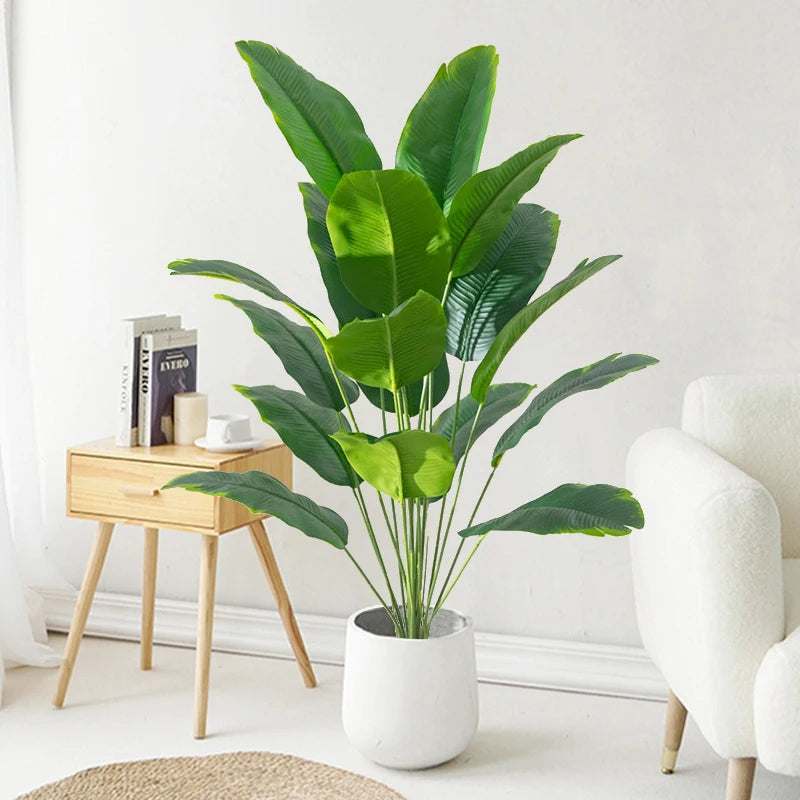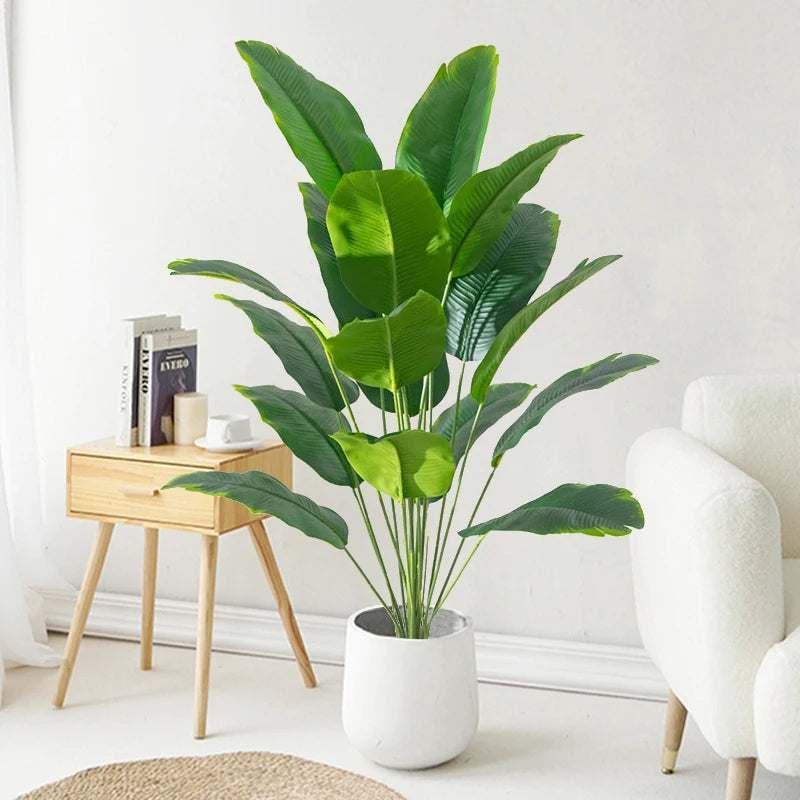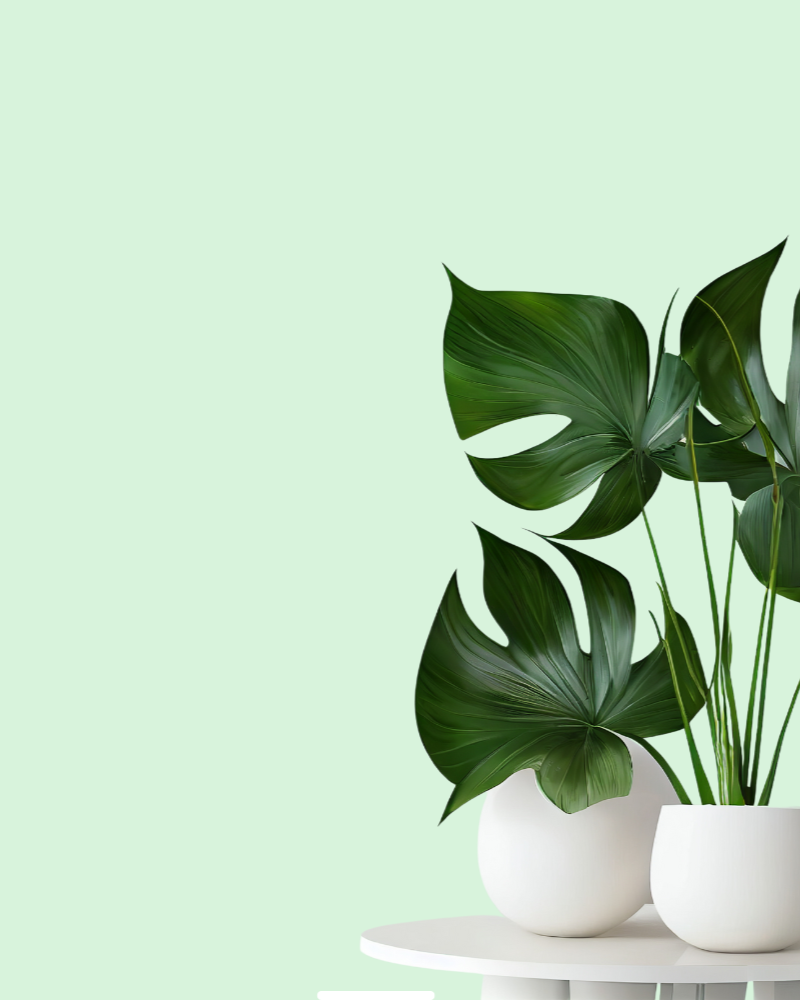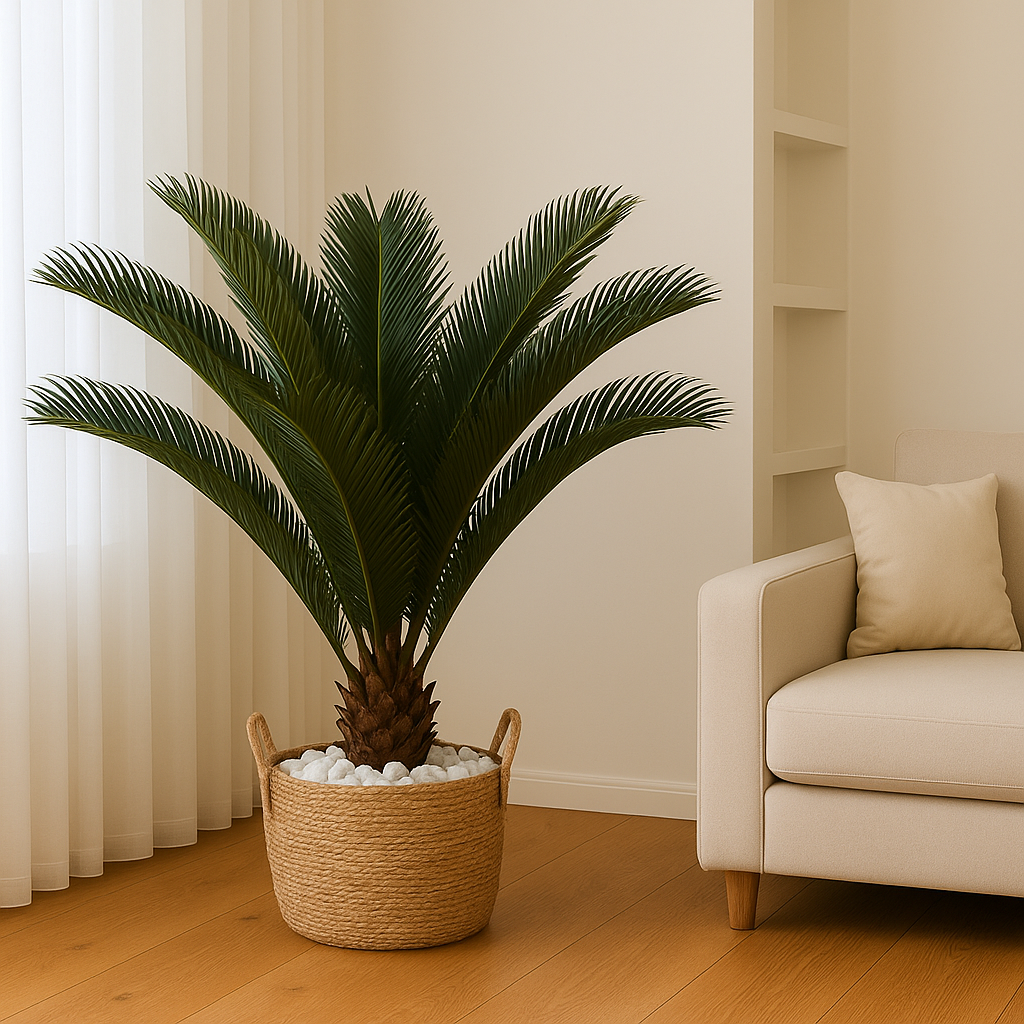Introduction
More and more people are paying attention to sustainability in their homes and interior design. But when it comes to artificial plants, many ask themselves: Are artificial plants even environmentally friendly?
In this article, we take a closer look: How sustainable are artificial plants really, what advantages do they have over real plants – and how can you decorate in an environmentally friendly way with conscious purchasing decisions?
1. Production of artificial plants – what’s involved?
Most artificial plants are made of materials such as plastic (PE, PVC) or textile fibers . At first glance, this doesn't seem very sustainable, as they are not natural products.
However, modern manufacturers are increasingly relying on recyclable materials , improved production processes and long-lasting quality, so that artificial plants can be used for many years.
2. Sustainability through longevity
Real plants are “natural,” but they also consume a lot of resources:
-
Regular watering → high water consumption
-
Fertilizer and soil must be purchased
-
Many houseplants come from overseas → long transport routes
Artificial plants, on the other hand:
-
Often last 10 years or more
-
Do not require water or fertilizer
-
Do not need to be replaced regularly
This makes it a sustainable alternative in the long term.
3. Resource conservation in everyday life
Especially in cities with low light or in apartments without balconies, it's difficult to keep real plants healthy. Many have to be replaced after just a few months.
Save on artificial plants here:
-
Transport costs (fewer new purchases)
-
Waste from dead plants
-
Care products such as soil, fertilizer, plant protection
➡️ The longer you use an artificial plant, the more environmentally friendly it becomes.
4. Reusability and recycling
Another advantage: high-quality artificial plants can be passed on or recycled after years.
-
Donations to social institutions or offices
-
Resale as second-hand decoration
-
Recycling of plastic and metal parts
This will extend the lifespan and avoid unnecessary waste.
5. Combination with real sustainability
Artificial plants do not exclude sustainability – on the contrary:
-
Use timeless designs that stay relevant for a long time
-
Combine artificial plants with genuine sustainable decorative elements (wood, glass, recycled materials)
-
When buying, pay attention to high quality so that the plants do not have to be replaced after a short time
FAQ – Frequently asked questions about the sustainability of artificial plants
1. Are artificial plants harmful to the environment?
Not necessarily. Because they're very durable and don't require resources like water or fertilizer, they often balance out their ecological footprint over the years.
2. Can artificial plants be recycled?
Yes, high-quality artificial plants are made of materials such as plastic or metal that can be recycled.
3. Which is more sustainable – real or artificial plants?
It depends on the use: If you don't have time for maintenance and constantly replace real plants, artificial plants are more sustainable.
4. How long do artificial plants last?
With proper care, they often last over 10 years, making them a resource-efficient investment.
5. Can artificial plants be combined with sustainable furnishings?
Yes – wood, stone, glass or recycled furniture harmonize perfectly with artificial plants and create an environmentally conscious home.
Conclusion
Artificial plants aren't automatically unsustainable. Their durability, resource conservation, and reusability often even make them an environmentally friendly choice—especially if you buy quality over quantity.
If you are looking for high-quality, long-lasting artificial plants that will enhance your home while being resource-efficient, discover our selection at Studio Verde .





